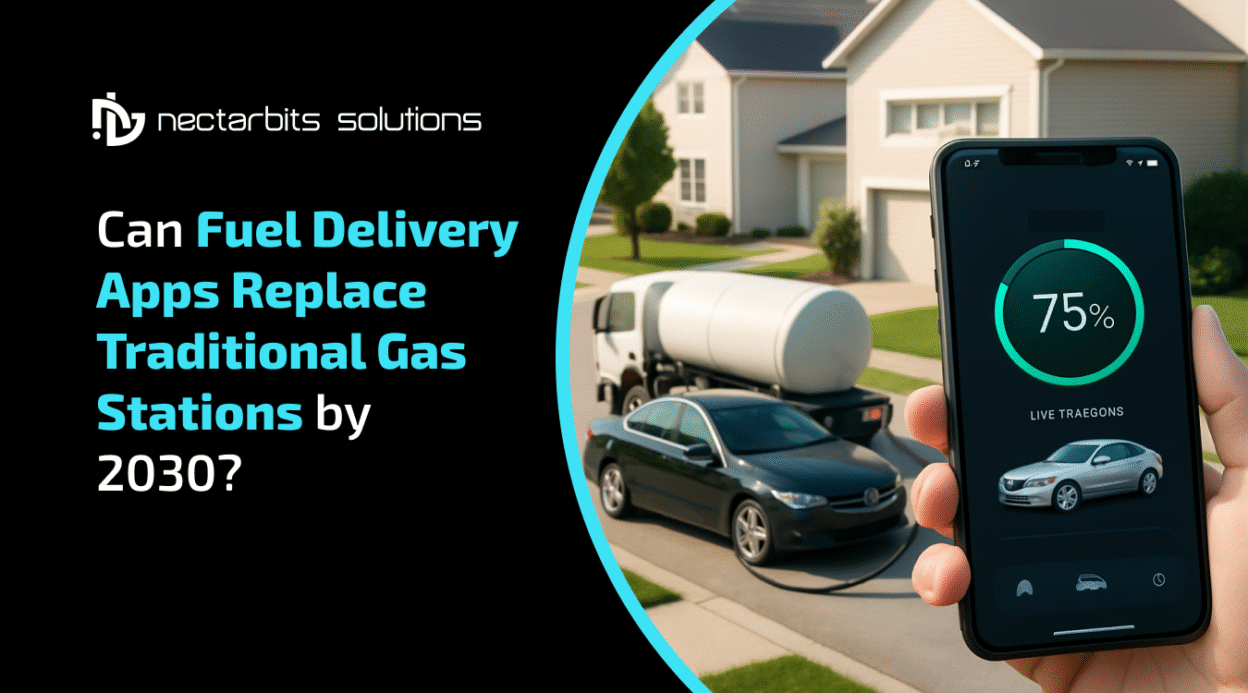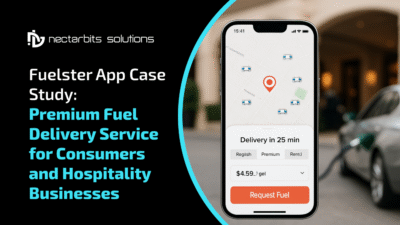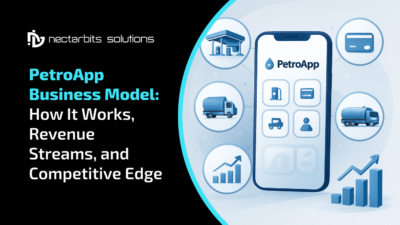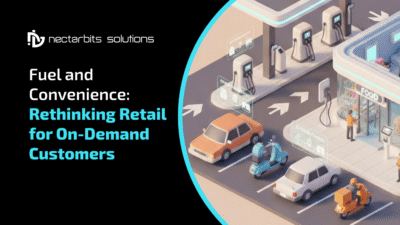Fuel delivery apps are mobile platforms that enable users to order fuel directly to their location, bypassing the need to visit a traditional gas station. Their rapid rise is fueled by consumer demand for convenience, urbanisation, and advances in digital technology. This question matters because refuelling methods are evolving in the context of contactless services, environmental pressures, and changing mobility habits. The core issue: Can these apps truly supplant gas stations by 2030, or will they simply disrupt and diversify the market?Can these apps truly supplant gas stations by 2030, or will they simply disrupt and diversify the market? Businesses looking to capitalize on this growing market need a comprehensive fuel delivery solution that addresses both technical complexity and regulatory compliance.
1. The Rise of Fuel Delivery Apps
- Evolution and Trend: Ondemand fuel delivery emerged as a response to urban lifestyles and the logistics sector’s needs. The sector is particularly popular in dense cities and among businesses seeking operational efficiencies.
- Key Players: Major companies include Booster, Yoshi, Cafu, and Filld—each offering a suite of app-based services from single-vehicle fueling to fleet support.
Global/International Fuel Delivery Apps
| App Name | Countries/Regions | Type | Platform |
|---|---|---|---|
| Booster Fuels | USA, expanding in North America | B2B, Fleet | iOS, Android, Web |
| Yoshi Mobility | USA (nationwide) | B2C & B2B | iOS, Android |
| Fuelster | USA (California, Nevada) | B2C | iOS, Android |
| MyPetrolPump | India (Bangalore, Hyderabad, etc.) | B2C & B2B | Android, iOS |
| EzFill | USA (Florida, expanding) | B2B & B2C | iOS, Android |
| Cafu | UAE (Dubai, Abu Dhabi) | B2C | iOS, Android |
| Filld | USA, Canada (Fleet focus) | B2B | iOS, Android |
| Gastogo | South Africa | B2B & B2C | Android |
| WeFuel (Acquired by Booster) | USA | B2C | N/A |
| Tankerwala | India (Pan India) | Diesel Delivery | Android |
| ReFuel Mobile | Canada | B2C & B2B | iOS, Android |
| iFuel | Singapore, UAE | B2C | Android |
| Neighbourhood Fuel | Nigeria, Ghana | B2C | Android |
| Tupuca | Angola | B2C | Android |
| Rivigo | India (Logistics + Fuel) | B2B | Android |
| Ufuell | Brazil | B2C | iOS, Android |
| FuelBuddy | India | B2C & B2B | iOS, Android |
| Petromin Express | Saudi Arabia | B2C | Android, iOS |
| Jaza Energy | Africa (Hybrid: fuel + energy) | Rural Fuel Access | Web |
- Growth Statistics:
- Use Cases:
2. What Fuel Delivery Apps Offer That Gas Stations Don’t
- Convenience: Users can order fuel from anywhere, often with same-day delivery, saving time and eliminating station visits.
- Flexibility: Services are typically contactless, supporting scheduled, recurring, and emergency orders.
- Smart Technology:
- Environmental Benefits:
3. Challenges Fuel Delivery Services Still Face
- Regulatory Hurdles: Apps must comply with complex, multi-jurisdictional safety and transport laws on fuel storage, handling, and delivery.
- Safety & Compliance: Ensuring strict adherence to EPA, OSHA, NFPA, and local safety codes is resource-intensive and costly.
- Limited Reach: Most services operate in urban or suburban zones; rural and remote delivery is often impractical due to cost and infrastructure limits.
- Operational Challenges: High costs for last-mile delivery vehicles, storage, and technology, plus continued reliance on bulk fuel supply from stations or depots.
4. Traditional Gas Stations: Still Relevant or Outdated?
- Rural & Long-Distance Reliance: More vital in less densely populated regions where mobile apps cannot reach or are financially untenable.
- Value-Added Services:
- Hybrid Models: Some traditional stations are adding delivery and mobile refuelling to their offerings, blending fixed and on-demand infrastructure.
The Technology Factor
- The Technology Factor
- utomation & AI: Automated dispatch, dynamic inventory, and demand forecasting optimize delivery efficiency and lower costs. The success of platforms like Booster and Yoshi demonstrates that robust mobile app development is essential for handling real-time tracking, IoT integration, and seamless payment processing.
- IoT Integration: IoT devices enable real-time vehicle tracking, smart metering, and inventory management for both service providers and users.
- Digital Payments & Analytics: Contactless payments, route optimisation, and user personalisation improve user experience and operational transparency.
- Adapting to New Fuels: Platforms are beginning to support biodiesel, EV charging, and even hydrogen (though scale is still limited)
6. Market Trends and Forecasts (2025–2030)
| Metric | 2025 Forecast | 2030 Forecast |
|---|---|---|
| Global mobile fuel delivery | $1 billion | $2 billion |
| Urban penetration (retail refuel) | 15% | 30% |
| Rural penetration | <5% | 10% |
| EV share of delivered “fuel” | 2% | 15% |
| Government incentives | Pilot grants in 20 cities | Broad tax credits and standards updates |
- Urban vs. Rural: Urban demand dominates; penetration in rural/remote areas expected to remain low. The rapid adoption of fuel delivery apps mirrors the success we’ve seen with on-demand food delivery solutions, where convenience and contactless service have become primary differentiators.
- EV Impact: As electric vehicles become more common, both gas stations and delivery apps face a shrinking total addressable market, though ICE vehicles still dominate in most countries.
- Policies: Incentives for cleaner fuels and delivery innovation exist in some regions, but regulatory hesitance regarding flammable goods transport slows adoption elsewhere
7. Case Studies & Industry Insights
- Corporate Adoption: Firms like Yoshi and Booster serve major corporate and logistics fleets, demonstrating cost and efficiency gains for B2B clients.
- Integrated Services: Expansion into car maintenance (oil, tire services) has improved customer retention.
- Urban Reliance: Cities such as Dubai (Cafu), San Francisco Bay Area (Booster/Filld), and some Indian metros have piloted large scale app-based refuelling with substantial user satisfaction.
- Cost Comparison: Delivery can reduce fleet downtime and administrative labour, but higher per litre rates and surcharges may not always be competitive for private consumers or rural fleets.
- Testimonials: Users prize saved time and convenience, especially for business or high mileage vehicles.
Future Trends & Innovation
- AI/ML & IoT: Full automation in dispatch, voice ordering, predictive fueling models
- Blockchain: Supply chain transparency, fraud prevention.
- Alternative fuels: Integration of hydrogen, EV fast charging, and biofuels within the same delivery footprint.
- Station partnerships: Gas stations can add on demand vans or pivot to service hubs.
Will Fuel Delivery Replace Gas Stations by 2030? (Expert Perspective)
- Supporting Arguments:
- Rapid urban adoption, strong demand for convenience, and continual tech improvements.
- Environmental and cost saving benefits for fleets and busy urban dwellers.
- Obstacles to Full Replacement:
- Hybrid Future:
- Fuel delivery apps and traditional stations are likely to co-exist, with convergence around value-added services (maintenance, delivery, EV charging).
- Geographic split: Urban areas see major app adoption and partial gas station displacement; rural/suburban areas remain reliant on stations through 2030 and beyond.
Conclusion
Fuel delivery apps excel in urban convenience, environmental efficiency, and fleet optimisation. Yet full replacement of gas stations by 2030 faces regulatory, operational, and geographic hurdles. A hybrid ecosystem, where traditional stations embrace mobile delivery and apps integrate EV charging, will redefine the refuelling landscape.
Final verdict: By 2030, fuel delivery apps may not completely replace gas stationsbut they will redefine the fuel landscape in urban regions.

1. Will fuel delivery apps completely replace gas stations by 2030?
Not entirely. While fuel delivery apps are rapidly growing in urban regions due to convenience and technology adoption, gas stations will remain vital in rural areas, long-distance travel routes, and as community hubs. The future will likely be a hybrid model where both coexist.
2. Are fuel delivery apps safe and compliant with regulations?
Yes, but compliance is complex. Providers must follow strict rules from agencies like EPA, OSHA, and NFPA, along with local transport laws. Safety protocols, certified drivers, and approved storage systems are essential for legal operations.
3. What are the main benefits of using a fuel delivery app?
– Contactless and on-demand refueling
– Time savings by avoiding gas station visits
– Fleet optimization and reduced downtime
– Real-time tracking, smart alerts, and digital payments
– Lower emissions due to optimized routes
4. Who uses fuel delivery apps the most?
Fuel delivery apps are popular among:
– Urban consumers who value convenience
– Corporate fleets and logistics companies
– Construction sites and business complexes
– Emergency users who run out of fuel
5. How do fuel delivery apps affect the environment?
They help reduce carbon emissions by minimizing detours, vehicle idling, and unnecessary station trips. AI-driven route optimization further improves efficiency. Some platforms are also exploring biofuels, hydrogen, and EV charging.




